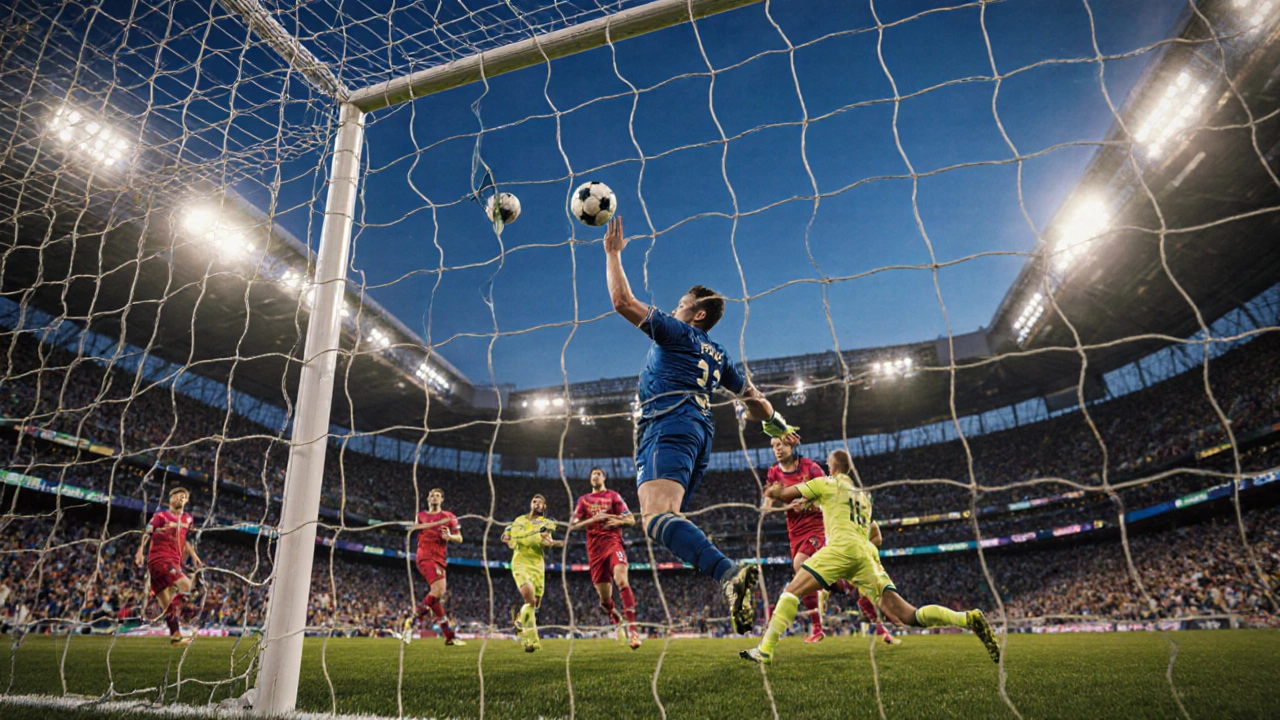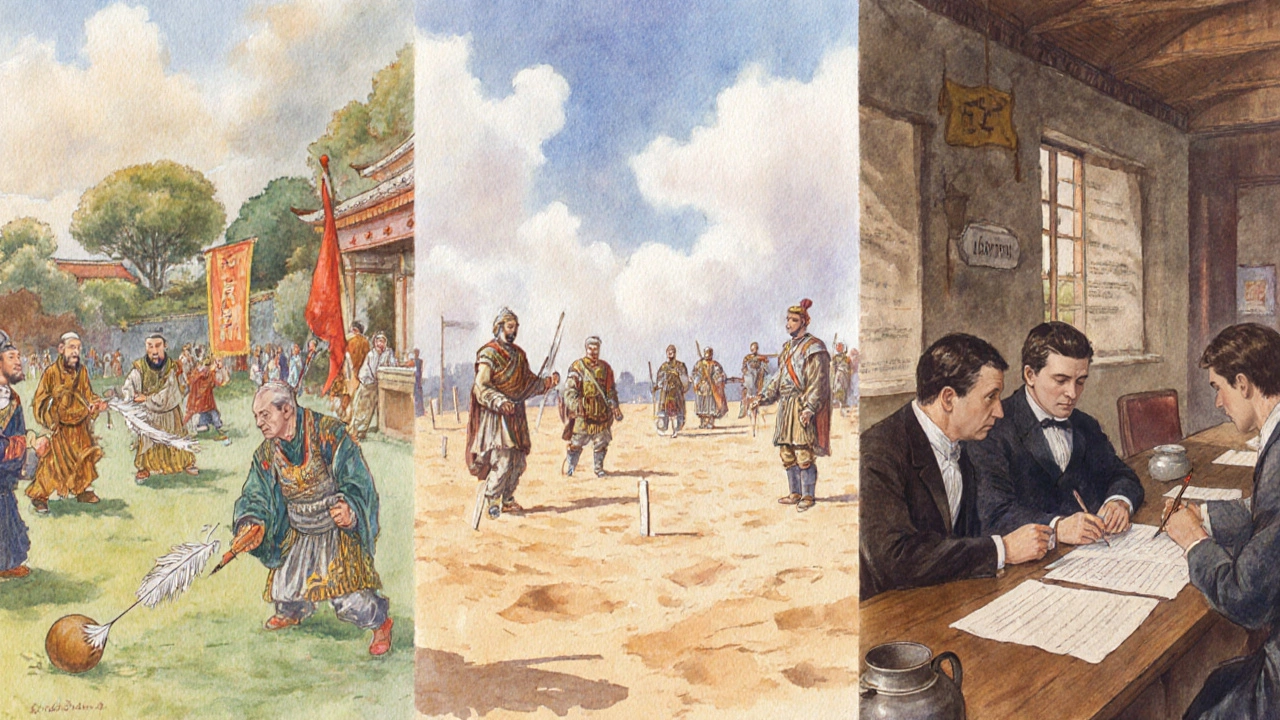What is Football? A Simple Guide to the World's Most Popular Sport
 Oct, 23 2025
Oct, 23 2025
When people talk about football, they usually mean the sport known worldwide as the beautiful game. Football is a team sport played between two squads of eleven players each, using a spherical ball that may be kicked, headed, or struck with any part of the body except the hands and arms. Its objective is simple: score more goals than the opponent within 90 minutes of play. The sport combines athleticism, strategy, and cultural tradition, making it the most watched and played sport on the planet.
Origins and Evolution
The roots of football stretch back over two millennia, with ancient games like the Chinese cuju and the Roman harpastum hinting at early ball‑kicking contests. The modern code, however, emerged in 19th‑century England. In 1863, the Football Association (FA) codified the first official rules, separating the sport from its rugby cousin. By the early 1900s, clubs and national teams were forming across Europe and South America, and the sport’s global spread accelerated after the inaugural World Cup in 1930, organized by FIFA.
Basic Rules and Gameplay
Understanding football starts with its core rules. The game is played on a rectangular pitch, typically 105 m × 68 m, marked with lines indicating the halfway line, penalty areas, and goal boxes. Each team defends a goal that measures 7.32 m wide and 2.44 m high. A match consists of two 45‑minute halves, with a brief halftime interval. If the score is tied in knockout competitions, extra time or a penalty shoot‑out decides the winner.
Key elements include:
- Goal - the primary way to earn points, counted when the whole ball crosses the line between the posts.
- Offside rule - a player is penalized if they are nearer to the opponent’s goal line than both the ball and the second‑last defender at the moment the ball is played.
- Penalty kick - awarded for fouls committed inside the penalty area, taken from the spot 11 m from goal.
- Throw‑ins, goal kicks, corner kicks, and free kicks restart play after stoppages.
Only the goalkeeper may use their hands, and only within the designated penalty area. Any other handball results in a direct free kick for the opposition.
Major Competitions and Governing Bodies
Football is overseen globally by FIFA, the Fédération Internationale de Football Association, which sets the Laws of the Game in partnership with the International Football Association Board (IFAB). Continental confederations, such as UEFA (Europe) and CONMEBOL (South America), organize regional tournaments.
The sport’s most prestigious events include:
- FIFA World Cup - held every four years, featuring 32 national teams competing for the ultimate trophy.
- UEFA Champions League - an annual club competition drawing the continent’s elite sides.
- Premier League - England’s top domestic league, renowned for its high tempo and global fanbase.
These tournaments generate billions in broadcast revenue and attract the world’s best players, reinforcing football’s status as a cultural and economic powerhouse.

Technology in Modern Football
Recent decades have seen technology reshape how the sport is played and officiated. The most transformative tool is VAR (Video Assistant Referee). Introduced officially in 2018, VAR allows referees to review four key situations: goals, penalty decisions, direct red‑card incidents, and cases of mistaken identity. While VAR has reduced glaring errors, it also sparks debate over game flow and subjectivity.
Other innovations include goal‑line technology, which instantly confirms whether a ball has fully crossed the line, and wearable performance trackers that monitor player speed, distance covered, and heart rate. These data points help coaches fine‑tune tactics and assist medical staff in injury prevention.
Football vs. Other Football‑Codes
Many people confuse football with rugby or American football, yet the games differ markedly in rules, field dimensions, and player roles. The table below highlights the most visible contrasts.
| Feature | Football (Soccer) | Rugby Union | American Football |
|---|---|---|---|
| Number of Players | 11 per side | 15 per side | 11 per side (offense) + 11 (defense) |
| Primary Scoring Method | Goal (1 point) | Try (5 points), conversion (2 points) | Touchdown (6 points), field goal (3 points) |
| Use of Hands | Only goalkeeper in penalty area | Both hands and feet allowed | Hands dominate play |
| Game Length | 90 minutes + stoppage | 80 minutes (two 40‑min halves) | 60 minutes (four 15‑min quarters) |
| Governing Body | FIFA | World Rugby | NFL (league) & NCAA (college) |
Although all three share a heritage of kicking a ball, football’s emphasis on continuous flow, limited use of hands, and low‑scoring nature set it apart.

Common Misconceptions
Even seasoned fans stumble over a few myths:
- Myth: “Football is a low‑skill sport.” Fact: Mastery requires precise footwork, spatial awareness, and split‑second decision‑making comparable to any elite sport.
- Myth: “All football matches end 0‑0.” Fact: The average goals per game in top leagues hovers around 2.7, with high‑scoring fixtures common.
- Myth: “VAR eliminates controversy.” Fact: While VAR corrects clear errors, subjective calls-like handball interpretations-still fuel debate.
How to Get Involved
If you’re new to football, the easiest entry point is to start watching a local match or a classic World Cup game. Pay attention to player positions: defenders protect the goal, midfielders link defense and attack, and forwards focus on scoring. Try playing a casual kick‑about with friends; the basic rules are simple enough to grasp after a few minutes of practice.
For a deeper experience, consider joining an amateur club. Most community leagues provide equipment, coaching, and a schedule that fits around work or study. Whether you aim to improve fitness, meet new people, or simply enjoy the thrill of a goal, football offers a flexible pathway.
Key Takeaways
- Football is a global sport governed by FIFA, played by two teams of eleven on a rectangular pitch.
- The main objective is to score goals while following rules like the offside rule and handling penalties.
- Major events such as the World Cup and the UEFA Champions League draw massive audiences.
- Technology like VAR and goal‑line systems enhances decision‑making but also sparks discussion.
- Understanding differences between football, rugby, and American football helps avoid confusion.
What is the main objective of football?
The primary goal is to score more goals than the opponent within the allotted 90 minutes. A goal counts when the whole ball crosses the line between the posts and under the crossbar.
How many players are on a football team?
Each side fields eleven players on the pitch: ten outfield players and one goalkeeper.
What is VAR and why was it introduced?
VAR stands for Video Assistant Referee. It was introduced to help referees correct clear errors in four key situations: goals, penalties, direct red cards, and mistaken identity.
What are the major football tournaments worldwide?
The biggest events are the FIFA World Cup (national teams, every four years), the UEFA Champions League (top European clubs annually), and continental championships like the UEFA European Championship and Copa América.
How does the offside rule work?
A player is offside if, at the moment the ball is played to them, they are nearer to the opponent’s goal line than both the ball and the second‑last defender. Being offside results in an indirect free kick for the opposition.